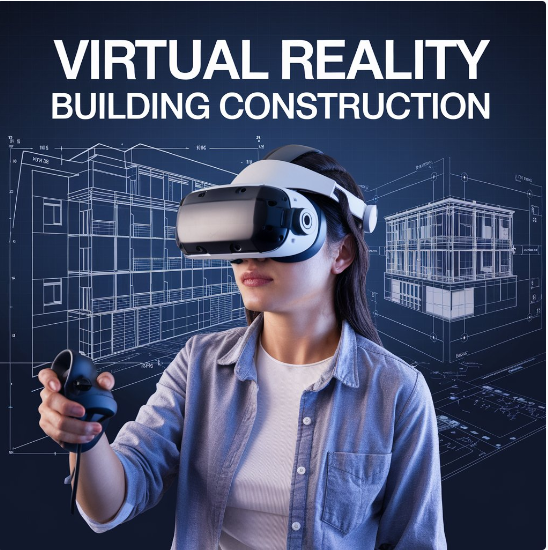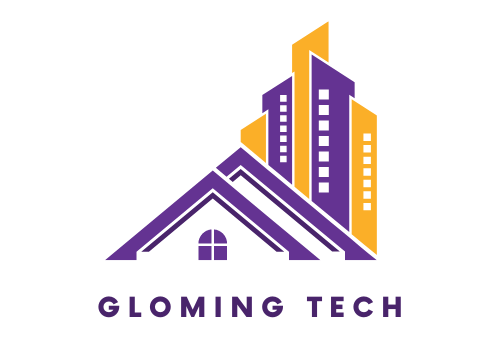Introduction: Virtual Reality Building Construction

The emergence of Virtual Reality (VR) in the construction industry is making it possible for builders, clients, and architects to virtually experience buildings, even before they are built, enhancing their participation in the project’s execution. 168, It is possible to comprehend such a building, configure a three-dimensional model of it, and imagine it ‘in action’ without going to a construction site. Each project’s scope is reduced to the utmost by this equipment which promotes teamwork and communication while also eliminating dangerous errors and simplifying the design and planning phases of the project. This leads to the completion of projects done deftly and avails in shorter time scales, thereby greatly meeting clients’ expectations. In this manual, we will explore the advantages of virtual reality in the building construction, what problems there are for the construction industry and how it is using VR.
The Rise of Virtual Reality in Construction
The construction sector v r is no longer a figment of one’s imagination, it is actively being put to practice. The technology makes it possible for architects, engineers, and construction managers to immerse themselves in a project digitally before laying a single stone. This revolution is caused by a further demand for higher efficiency, cost reduction, and more involvement of various stakeholders.
Appropriate measures have been identified and taken to address this gap including, but not limited to, the adoption of VR in their construction process. Hardware and software capabilities that are availing the VR adoption in construction have been in the last few years bettered. Realistic head mounted displays and fast machines are able to recreate real life situations almost to the tee. This technology has thus allowed construction to embrace virtual reality as part of their undertakings which has positively changed the expectations.
Benefits of Virtual Reality in Building Construction

One of the most notable merits of VR in construction is the fact that it enables the early identification and rectification of design defects which, if left unchecked, may surface later in the process as expensive problems. Because they are immersed in a virtual world, project groups are able to predict difficulties that are likely to occur in the real world construction hence lead to lesser unplanned expenditure and time.
More importantly, VR allows the enhancement of communication and collaboration among the different personnel involved in the projects. Clients, architects, engineers are able to be in the same space in a virtual environment thereby ensuring that all of them have clear and precise aims regarding the design and achievement of a certain project. This consensus and shared information results in appropriate decision making thus avoiding communication errors.
Lastly, VR is beneficial in terms of education and safety of construction workers. Employees can learn to use equipment and even move around a construction site without putting their lives at risk in a virtual world and therefore, they are able to observe more safety when construction operations commence. Such an initiative helps reduce the occurrences of accidents and emphasizes safety in the industry.
How Virtual Reality Transforms Architectural Design
Architectural design is one field where we can witness the full implementation of VR technologies. It allows them to create a variety of design ideas and appreciate how they can be in reality. This possibility enables them to work on and improve designs hence idealizing both form and purpose in the end product.
The use of Virtual Reality in architecture further allows rendering and presenting the designs to the clients in a more exciting way. Clients can now virtually tell how their building will look by moving around in the model of the intended building. This not only increases the satisfaction of the client, but also makes the client help in more appropriate changes.
In addition, virtual reality extends to green evaluations and sustainability evaluations. While architects can mimic a facade’s natural lighting and action energization, structures are planned for energy efficiency and further interaction promoting greener construction.
Enhancing Project Management with Virtual Reality

As far as construction project management is concerned, it is easy to note that the performance of this process is enhanced through VR. Such construction managers as planned construction sequences and resource allocation monitoring can utilize a VR environment to collaborate in planning the construction. This ability helps them deal with understaffing and maximize workflow which will in turn increase the efficiency of the implementation of the project.
Simultaneously, VR also helps in risk management by giving professionals the opportunity to visualise different project scenarios. Managers are able to simulate different scenarios such as what would happen if the equipment broke down or there were bad weather and they can find a solution in advance. Thus, further enhancement of managed project risks looms large because of promoting contingency plans.
Last but not least, it is also worth mentioning that VR also enhances active engagement of stakeholders through the channels for accountability. Participation in regular meetings, conducted in a virtual environment allows the project teams to overcome difficulties and unify their actions towards causing the project targets to be achieved within the necessary time frame.
Case Study 1: The Use of VR in Skyscraper Construction
An interesting application of VR in the construction industry is in the case of building high-rise structures. Recently, one of the leading architectural firms employed the virtual reality technology in designing and erecting an uptown skyscraper in an active setting. With the help of immersing into a virtual model, the team was able to move around the structure and analyze how it would cut into the existing space.
The team was able to utilize VR to improve the position of the building to harness more light and air. This consideration added to the energy management features of the building but also improved the environment inside the building as well.
In particular, VR was crucial for the integration of various building systems, including HVAC and electrical systems. The maintenance actions were enhanced by predicting such intricate mechanical task installation from a virtual perspective whereby such predicaments were solved prior installation decreased costs.
Case Study 2: VR in Residential Housing Development
On the other hand, a residential housing builder project with which VR was employed revolutionized the buying process of homes for the intended customers. For instance, potential buyers were given VR head sets to visit the model houses for viewing and be ready to pick the desired designs. Such experience made buyers to appreciate the field, and as a result better decisions were made during the purchase.
The application of such systems was also done during the construction stage as it was used to simulate construction activities and train the workers to achieve a certain building standard. This gave the workers an opportunity to practice in a simulated environment where they were able to actualize the different procedures which resulted in fewer mistakes during actual construction.
The use of VR on this residential project was not just limited to improving the experience of the target buyers but also to improving the levels of construction efficiency and quality hence delivering a commendable project which has been received well in the market.
Overcoming Challenges and Embracing the Future of VR in Construction
The advantages of virtual reality in the construction sector are considerable, however the technology has some impediments. There is a considerable cost associated with acquiring VR equipment and software for the first time and there could be quite a steep learning curve for those working within the industry who are not familiar with the technology.
Moreover applied virtual reality measures in companies often imply significant change in organizational cultures. Such investments in staff and organizational training in project management if made would ensure that the workforce is competent in full use of VR.
However, despite these issues, the prospects for virtual reality in the construction sphere are optimistic. With the development of technology as well as the growth of the market, the areas of its application will broaden thus bringing about unprecedented creativity and efficiency to the whole industry.
FAQs: Virtual Reality Building Construction

In what ways is virtual reality applicable in building construction?
One of the major aspects of using virtual reality in construction is the making of 3D walkthroughs and animations of the building and land designs. It helps in coming up with designs of the building and its internal arrangement even before the actual building commences. It can also be utilized in training exercises, inspecting sites, and planning projects, whereby interested parties can assess and review a particular undertaking within a virtual space that closely resembles the real one.
What are some of the advantages for the users in respect to the construction processes when VR is integrated into construction?
There are quite a number of advantages that come with the use of VR, among them; better visualization, improved teamwork, and timely recognition of any faults in the designs. It permits everyone who is concerned with the undertaking to appreciate the important aspects of the construction project thus avoiding conflicts and mix-ups. Also, the use of vicious can identify potential problems in the construction and other processes and help streamline the various movements within a business before major changes are made during construction. Just like those timelines and budgetary implications are also observed.
Let us consider if VR can assist with safety instruction for construction works?
Yes, VR is one of those tools which Inquires understands can be used for safety instruction. Actually it lets the workers experience the risk of the performed activity and practice actions in regard to those threats at a safe environment which is an exaggerated place. The workers thus acquire itinous experience that may be handy in practice and makes them better informed about safety issues at the site lessening the rate of accidents occurring out there.
What hardware and software do you need to use virtual reality in construction?
After all the necessary definitions have been provided, let’s turn now to the business of construction and see how virtual reality can be practically applied in this field of human activity. Apart from the information mentioned above, what do you need in order to integrate VR into construction activities? A VR headset or dome, such as an Oculus Rift or an HTC Vive, a strong computer, and Construction specific VR software are the primary prerequisites.. Any enhancement to add on to movement in the VR environment can be added for example motion detectors or controllers.
How expensive is it to apply VR in construction?
The expenses related to the use of VR in construction projects differ from each other based on the equipment, software used, and the complexity of the virtual scenario or simulation. Initial costs might involve the purchase of hardware embraced with VR inclusive of software license costs and other factors such as user training. VR application comes at a cost and for this reason, it has always discouraged some construction firms, but for most of them, the returns of investing in its application surpass those of artificial spending on construction by saving costs and time.
Conclusion: Virtual Reality Building Construction
Through its branches, virtual reality is changing the traditional construction world from within, allowing its players to reach previously impossible efficiency and levels of novelty. From making architectural designs more attractive to often oversimplified project management, VR is changing the very principles of project inception and execution.
As for the industry professionals and organizations aspiring to remain competitive, there’s no way around it, transaction has to include VR. Organizations can lead the market with effective use of virtual reality by incorporating this technological innovation into the culture of the company.
When you feel ready to leverage VR technology in your construction projects, think about getting in touch with the specialists who will help you. Without the proper tools and skills, the potential of virtual reality will remain virtually ignored, depriving construction industry prospects of efficiency, sustainability and prosperity.
